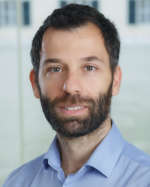Integrated spatial planning for multi-functional landscapes
Dr Piero Viscont
- Start Friday 04 Jun 2021 4:00pm
- Finish Friday 04 Jun 2021 5:30pm

The vast majority of extractive and productive activities undergo planning and application processes and are subject to regulation. Despite this, habitat loss and degradation are still the primary causes of global biodiversity decline, accelerating green house gas emissions and other environmental impacts. Part of the reason is that ecological data and biodiversity objectives are insufficiently considered in these planning processes, while at the same time conservation and restoration planning, especially in the scientific domain, seldom account for other objectives, e.g. food production, timber extraction, job creation. It is therefore not a surprise that these conservation plans often remain academic exercises and do not get implemented. Piero will present a few approaches and real-world examples of multi-criteria spatial planning that are aimed at jointly achieving multiple, typically competing, targets, and discuss their advantages and disadvantages in terms of driving forward the science and practice of spatial planning for biodiversity conservation. He will also present two projects at the catchment level and the continental level which IIASA is leading, that aim to integrate habitat conservation and restoration, sustainable water use, agriculture and forestry within a single planning framework, that can be applied by planning authorities at local to national scale to plan and evaluate applications for extractive and productive activities and conservation interventions.
Piero Visconti is the Biodiversity, Ecology, and Conservation (BEC) Research Group Leader at IIASA. Visconti holds a doctoral degree in Conservation Planning from James Cook University, Australia. After his PhD, Visconti held postdoctoral positions at the University of Rome, the Microsoft Research Cambridge Computational Ecology Group, and the United Nations Environment Programme World Conservation Monitoring Centre (UNEP-WCMC). Prior to joining IIASA, Visconti was a joint Research Fellow at University College London’s Centre for Biodiversity and Environment Research (UCL-CBER) and the Zoological Society of London’s Institute of Zoology (ZSL-IoZ), where he worked on normative scenarios for biodiversity and integrated spatial planning for biodiversity conservation, restoration, and food production. At IIASA, BEC’s as well as Visconti’s own research span a broad set of topics within applied ecology and conservation. BEC research combines methods from systems analyses, global change biology, conservation biogeography, spatial planning for biodiversity conservation, and restoration, to answer scientific questions and provide policy support.
Alongside his research and supervision activities, Visconti engages at the science-policy interface, for instance, through his past role of coordinating lead author of the Intergovernmental Science-Policy Platform on Biodiversity and Ecosystem Services (IPBES) Regional Assessment of status, trends, and future scenarios of biodiversity and ecosystem services for Europe and Central Asia.

